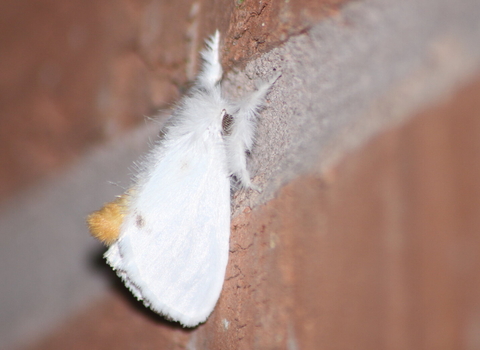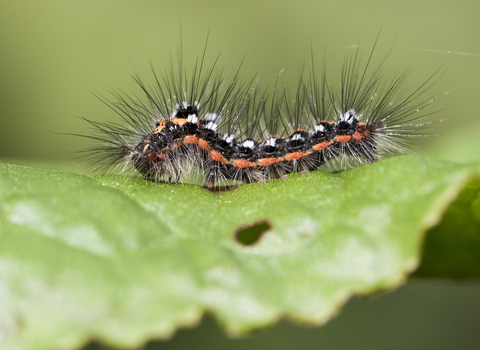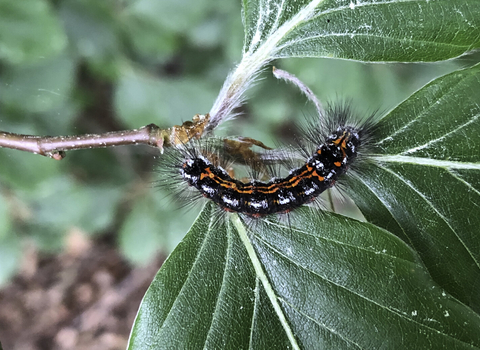
Yellow-tail © Tom Hibbert

Yellow-tail © Tom Hibbert

Yellow-tail moth caterpillar ©Chris Lawrence

Yellow-tail caterpillar © Tom Hibbert
Yellow-tail
This snowy white moth is easily mistaken for the similar brown-tail, until it lifts its abdomen to reveal a burst of golden-yellow.
Scientific name
Euproctis similisWhen to see
Adult: July-AugustCaterpillar: September-June
Species information
Category
Statistics
Forewing length: 16-23 mmCommon
Habitats
About
The yellow-tail is found in a broad range of habitats across the UK, from woodlands and hedgerows to urban parks and gardens. The moths fly in July and August, though there can be a small second generation in October. They can sometimes be found resting amongst the leaves of their foodplants during the day, but are more often seen as they're attracted to lights at night.The caterpillars appear in September, feeding on a wide selection of broadleaf trees and shrubs, including hawthorns, blackthorn, oaks, roses, hazel, and willows. They'll occasionally eat grasses and other herbaceous plants, too. They spend the winter as a small caterpillar, within a protective silk tent tucked away somewhere on or under the foodplant. Unlike brown-tail caterpillars, which share their silk tents, each yellow-tail gets a shelter to itself.
The caterpillars emerge again in April to carry on feeding, when they can be quite obvious resting on top of leaves. When they're fully grown and ready to become adult moths, they pupate in a hairy silken cocoon, either hidden amongst foliage or in the leaf litter below.
How to identify
Moths are mostly snowy white, though males usually have some dark smudges near the trailing corner of the forewing (faint or absent in females). They have a white body with a golden-yellow or orange-brown tip to the abdomen. This yellow 'tail' is usually hidden by the wings at rest, but they will sometimes lift their abdomen up so the yellow end sticks out above the wings.Caterpillars are black, with a slight hump not far behind their head. They bristle with tufts of long black hairs and shorter white ones. Two bright red or orange lines run close together along their back, sometimes broken into dashes, with a row of white markings either side of them. They also have a thick red line along each side of their body.
